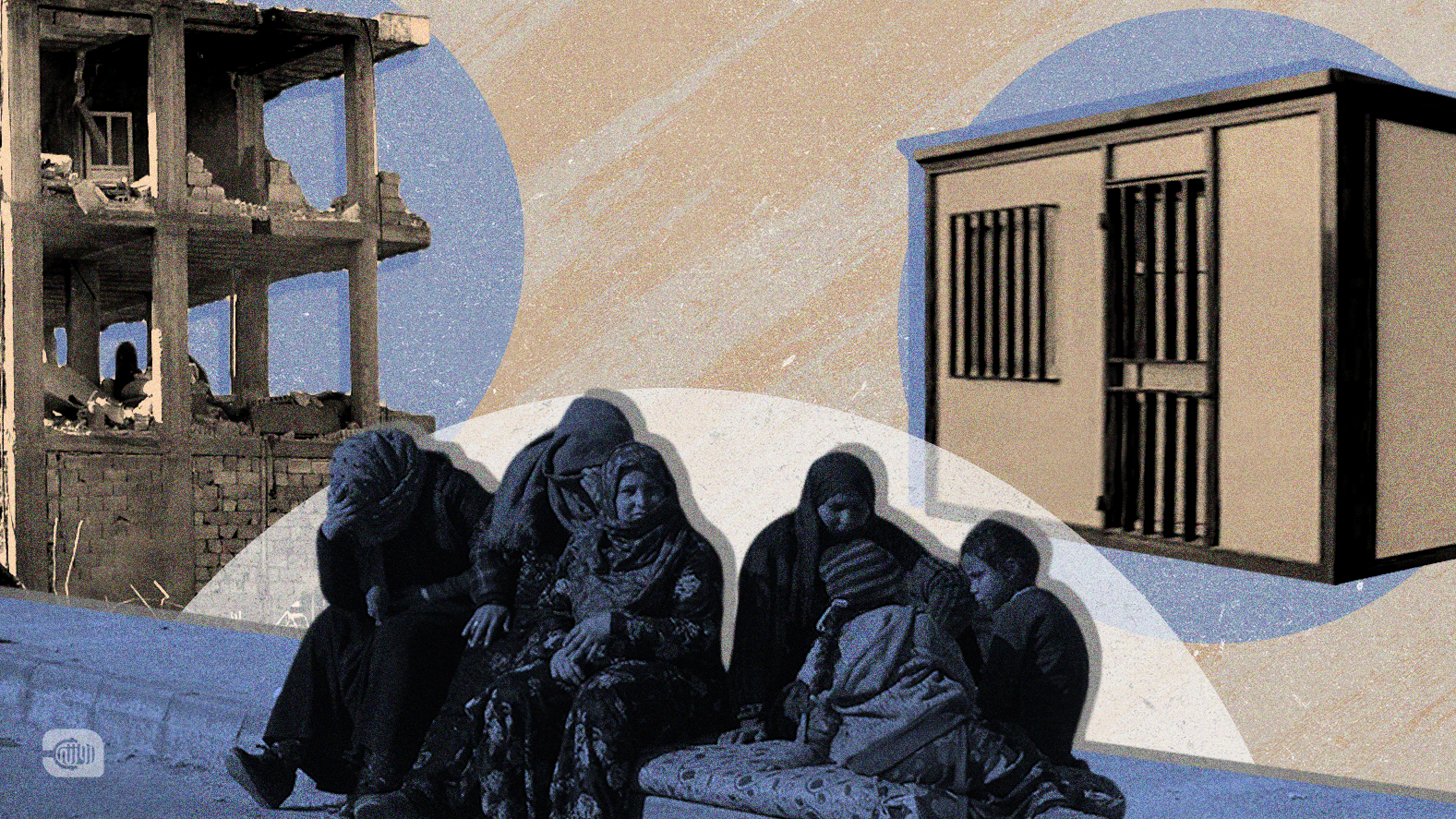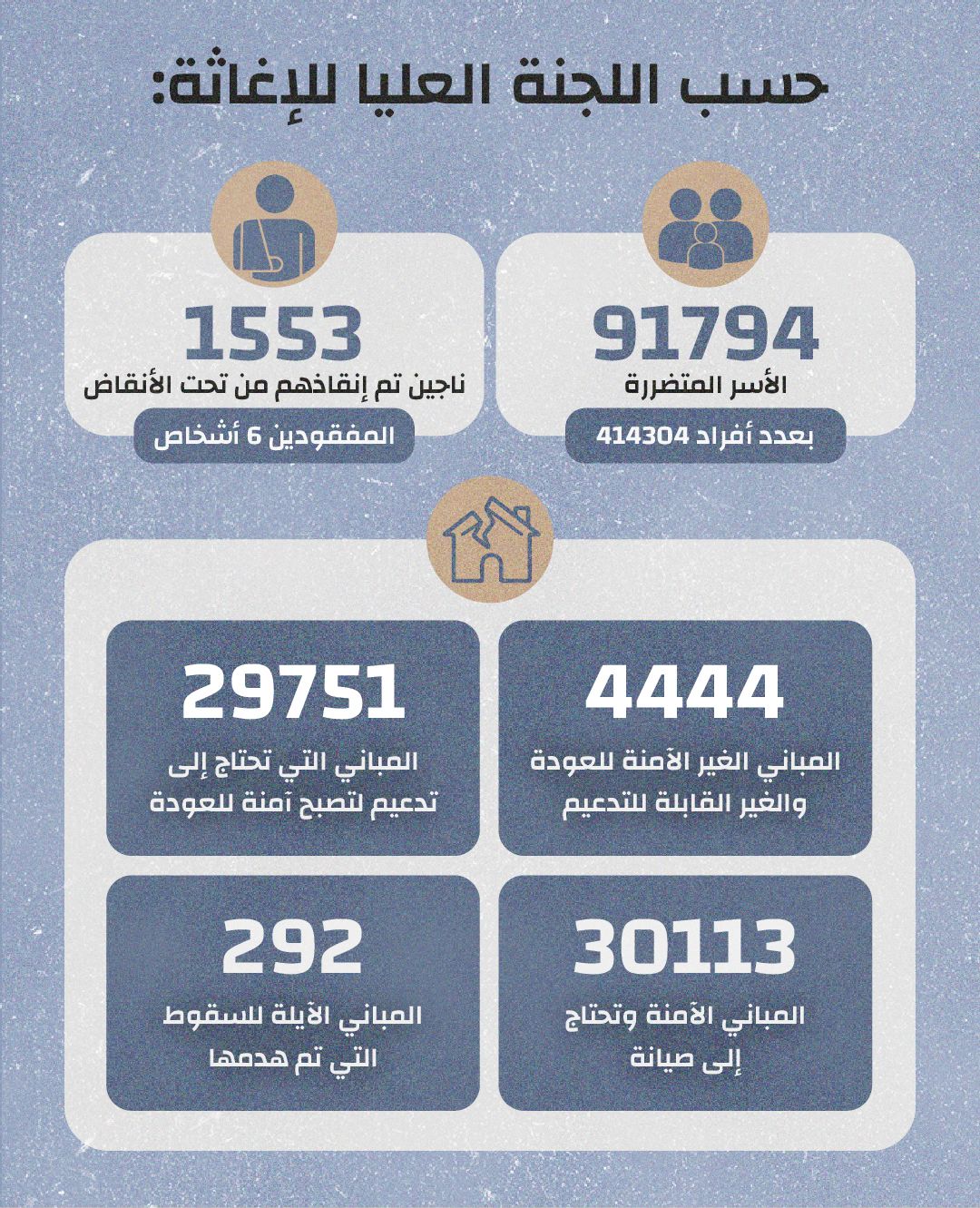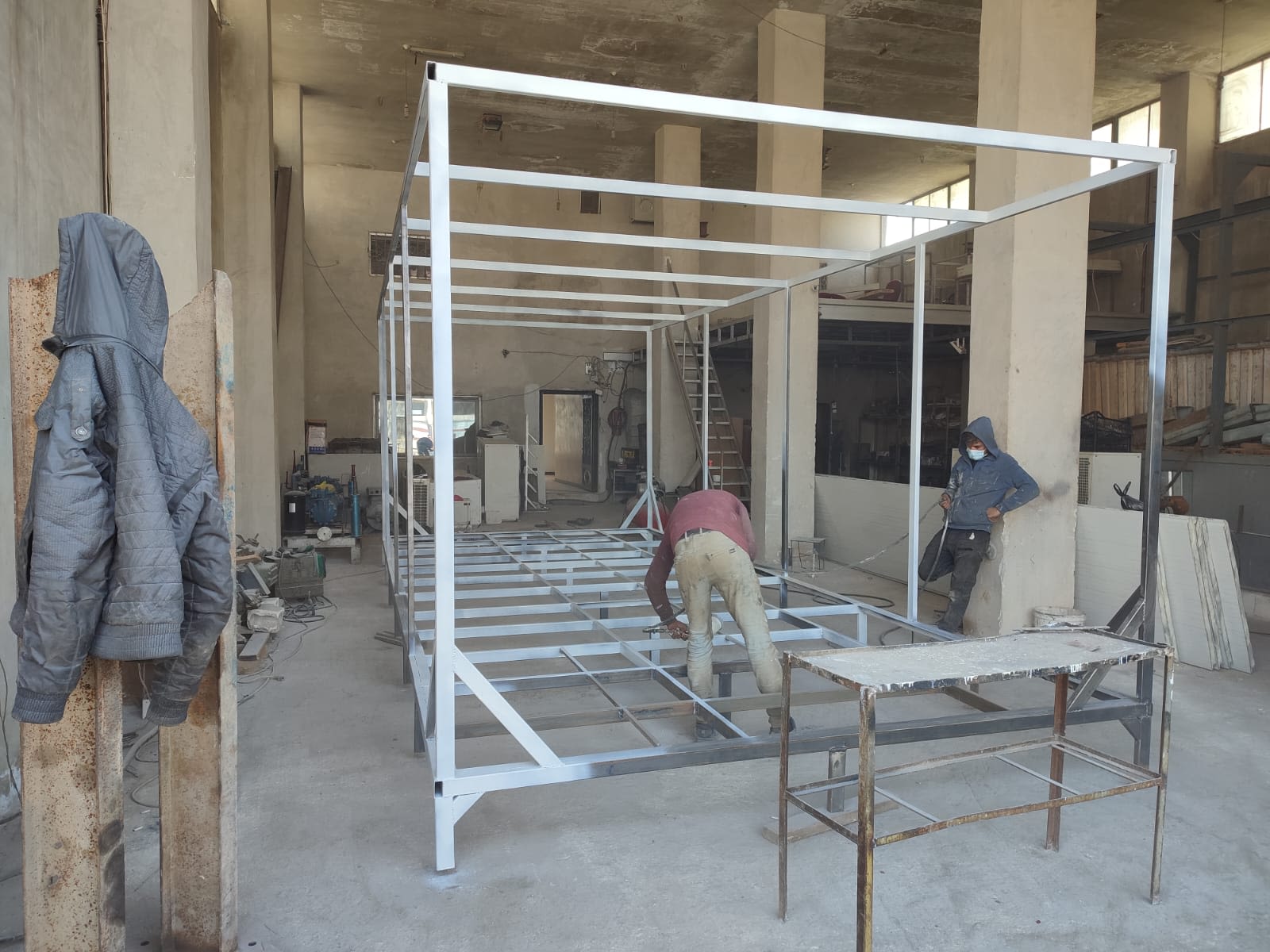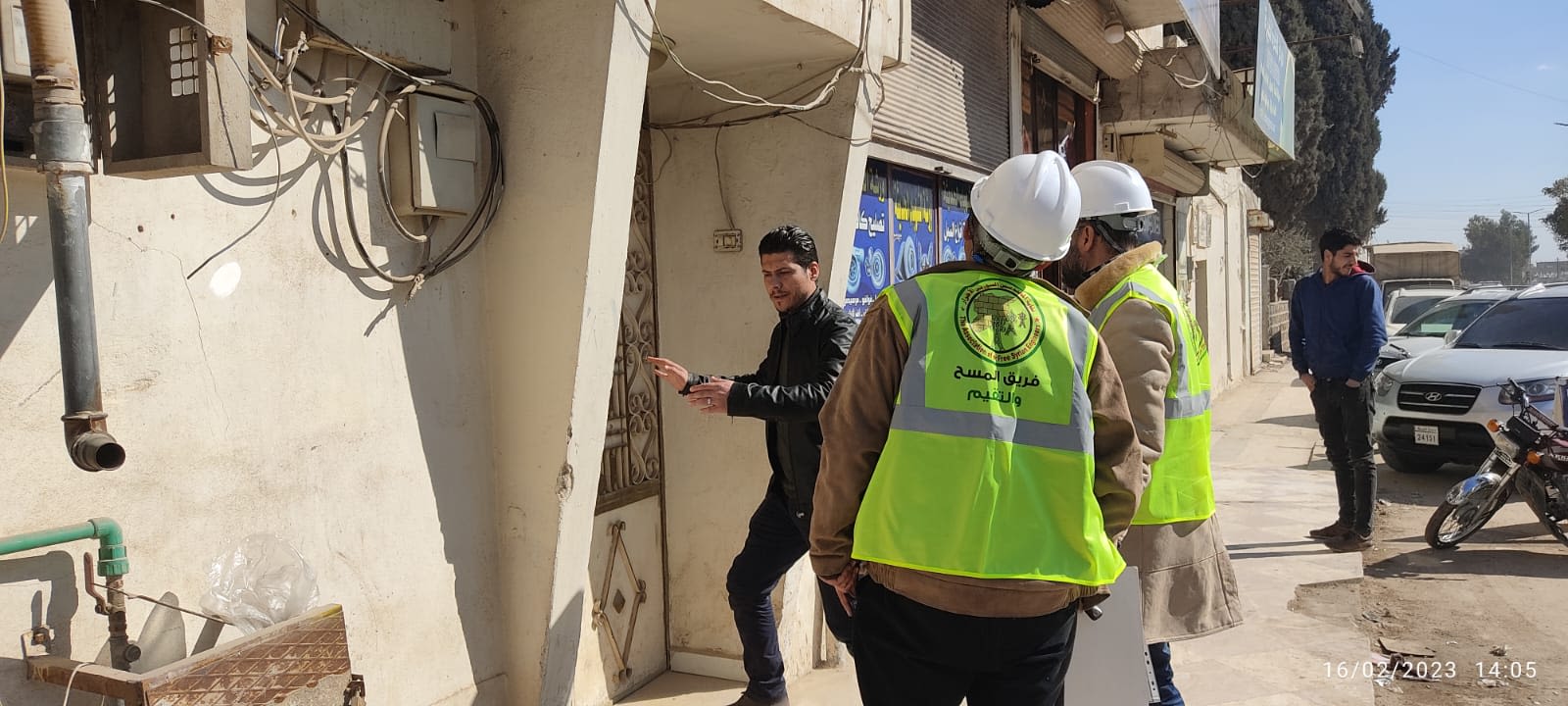
Creative Solutions to Construct Mobile Homes for the Earth-Quake Affected in Syria
Suhad al-Khudari
The Syrian regime hasn’t fulfilled its commitment towards those who have been affected by the February 6 earthquake, and hasn’t operated the emergency fund as announced. At the same time, individual initiatives offered alternative solutions to the issue of housing the affected. Contractors and engineers proposed building caravans and mobile homes in the different areas affected by the earthquake in Syria.
No Responsibility, No Obvious Solutions
The Syrian regime didn’t compensate or take initiative towards the residents of northwestern Syria, on the grounds that the area is opposition-controlled. It didn’t offer any collaborative solutions to save those who have been affected by the earthquake, be it domestically or internationally.
In a televised speech, ten days after the earthquake, Bashar al-Assad has promised to provide the earthquake-affected with permanent housing. “Relevant governmental institutions started working on providing temporary housing, until the permanent one is secured. Setting up a fund is currently being studied, so that those who have been affected can be supported until they manage to get back on their feet in every way. That should happen after assessing the damage completely, setting an evaluation criteria for choosing those who should be supported,” Assad said. In his speech, he only mentioned Aleppo, Hama, Latakia.
With the absence of any instructions concerning the emergency fund or the amount of the compensations, a month after the earthquake, the National Microfinance Bank launched the Saned loan for restoring and rehabilitating earthquake-destroyed houses in Aleppo; Latakia; and Hama. The loan is interest-free, with a financing value of up to 18 million Syrian pounds and a six-year repayment period.
On February 26, Damascus Chamber of Commerce pledged to construct two buildings for the earthquake-affected in Aleppo. Syrian Investment Agency Director General, Madin Diab, told al-Watan that he’s negotiating with an investor so that he would be granted a building permit to construct previously-built housing units; and that he’s working on a study.
On March 2, al-Watan reported the High Relief Committee's last statistics on the extent of the damage done to people and infrastructure due to the earthquake.

According to the committee, building surveys are still ongoing; new shelters are underway; select locations are being prepared for constructing the previously-built housing units; and relief supplies are being distributed according to the finished databases of the affected families.
Craftsmen Design Alternative Housing in Shaykh Najjar
Shaykh Najjar is an industrial GoS-controlled city.
The Chief Executive Officer of the industrial city in Sheikh Najjar, Saad Saud Ghanaymi, told Rozana that craftsmen designed 3 prototypes of caravans or the so-called previously-built housing units after the destructive earthquake. Each one is 12-30 meters wide, and consists of one or more rooms, a reception, a kitchen, and a bathroom with solar panels. In addition to having light, the units are also weather-resistant; soundproof; and effective for five years.
“Even though the idea spread as soon as the photos were posted on social media, we haven’t heard from the government or any relief organizations. The price of each caravan ranges from 2200 to 6800 USD, depending on the size. Affected families can’t afford such a price: they are in streets and parks under the rain, since their houses have been destroyed. Until now, I have only made prototypes,” Ghanaymi said.

إحدى ورش صناعة المنازل مسبقة الصنع
إحدى ورش صناعة المنازل مسبقة الصنع
International Sanctions, Manufacturing Inputs
Everyone working in the caravan-making industry is struggling, as the exchange rate has reached 7300 Syrian Pounds to the US dollar.
“50% of the raw materials used to construct these units, like fitted carpet; solar panels; thermal insulators, aren't available in the local market” due to the international sanctions that have been imposed on Syria for more than 10 years, as Saud Ghanaymi explains. Implementation cost has also increased because of the import ban.
It became clear that the implementation cost of one caravan has increased. Due to local currency devaluation, the cost now is ranging from 7 millions to 20 millions.
Washington claims that economic sanctions don't target Syrians, and that they only target the Syrian regime; its supporters; and the central bank. However, many believe that there’s not a clear mechanism paving the way for western banks to operate without being afraid of being sanctioned as a result of dealing with Syrians.

صور تعبيرية من لجان تقييم المباني في شمال غرب سوريا
صور تعبيرية من لجان تقييم المباني في شمال غرب سوريا
Jindires Recovering
Muhammad Hamid, who owns a metal company, designed prototypes of two caravans in the affected area of Jindires in northwestern Syria. One is 20 square meters and the other is 27 square meters, and the cost has reached 3000 USD.
Jindires is an opposition-controlled area in northwestern Syria, partly by the Ankara-backed Syrian National Army.
“I presented the caravan prototypes to some relief organizations in the area, but none of the affected has requested any,” Muhammad tells Rozana.
The caravan Muhammad designed has two rooms, heat-resistant bathroom and kitchen, heating, light, freshwater and saltwater. As for the cost variation in GoS-controlled areas, the earthquake damage assessment committee member explains that they have raw materials. In addition, having the markets in GoS-controlled areas dominated might also cause an increase in cost.

Opposing View: Temporary Housing Is No Solution
Mobile homes aren’t suitable for those who have been affected, given the high cost. “It’s better for families to build two-storey buildings, as long as the design takes into account the seismic codes. It’s better to construct such buildings instead,” said Gamila Oscham, who has a master's degree in building mechanics (dynamic Soil–Structure Interaction during strong earthquakes).
Mustafa Saqr, consulting civil engineer and member of the damage assessment committee formed by the Association of Free Syrian Engineers, asserted that caravans aren’t suitable for earthquake-affected Syrian families; and that such caravans are simply a stopgap solution that would only last for no more than six months. Saqr also believes that concrete homes are better, as one family home won’t cost more than 6000 USD, let alone that people will be able to preserve their dignity and live in suitable homes like everyone else.
The damage assessment committee member hopes the United Nations constructs these buildings to help the Syrian families who have been living in tents and caravans due to displacement, the war, and the earthquake. He also hopes it builds full-fledged residential neighborhoods, saying that the association is willing to provide the studies and the designs needed to construct such neighborhoods.
The civil engineering professor at Gaziantep University, and “structural response to earthquakes” specialist, ascribes the collapse of a large number of buildings during the February 6 earthquake to poor designs; low-quality constructions; and contractors stealing construction supplies.
According to Oscham, some of the earthquake-affected buildings in northwestern Syria weren’t earthquake-resistant ــــ a main reason why losses were huge. Northern Syria was also the most damaged, as it is the closest to the epicenter of the earthquake. Jindires is the best example. However, that hasn’t always been the case as building permits were never issued unless a seismic survey was done.
Seismic Activity in Syria
Since the February 6 earthquake, there have been more than 6 thousand aftershocks so far.
It’s true that the country hasn’t been seismically active. However, earlier this year, the National Earthquake Center in Syria had predicted that a moderate earthquake was going to hit the country.
Over the past few years, numerous earthquakes have been hitting Syria. Most significant of which was in 1759, when a 7.8 magnitude destructive earthquake hit Damascus.
In 1822, Aleppo was also struck by a destructive earthquake. It was as strong, and was on the same fault line as well. There were thousands of victims, and millions of affected people who lost their houses or had to leave them.
The former Head of the Engineering Division in Rif-Dimashq, Muhammad Mazhar al-Shorbagy, explains that the buildings in Syria collapsed for several reasons. Most important of which, he says, are: “In northern Syria, the construction was poor and random. As for Homs, Latakia, and the GoS-controlled areas, the buildings collapsed because they weren’t earthquake-resistant; the Syrian code for earthquake-resistant buildings was infringed as well as the standards and specifications; building materials fraud, either in quality or in quantity; and unsuitable soil”.
Al-shorbagy stresses that the Association shouldn’t issue permits, unless a structural study is developed and the Syrian code is followed.
The Syrian Engineering Community conducted a study on the strongest earthquake to have struck the area in decades: the February 6 earthquake that hit northern Syria and southern Turkey. The study listed the most affected areas, in terms of deaths; injuries; partially damaged houses; and completely destroyed houses.
Al-shorbagy sees that involved parties, like the Engineers Association; municipalities; and contractors, should be obligated to construct the buildings in accordance with the Syrian code; or the Federation Of Arab Engineers. He also recommends amending the parts related to high-rise buildings, and applying the structural theories used in Japan and China in terms of base isolation.
He also recommended selecting the safe materials used in developed countries, working in accordance with mechanisms approved by high-ranked research institutes, reconsidering the used mechanisms, selecting blunt geometric shapes that don’t have many angles so that they won’t be easily affected by earthquakes, using regular shapes like rectangles and squares, …. , and reconsidering the urban planning mechanisms.
Saqr asserts that Jindires is one of the most earthquake-affected areas: the proportion of affected buildings has reached 70% ــــ they’re either destroyed or currently uninhabitable, and therefore need demolishing or stabilizing. On the other hand, Suran is 15% damaged; Afrin is 10% damaged; and Azaz is 5% damaged.
According to the structural engineering team inspection, nearly 30% of the affected buildings in northern Syria are new and no older than 15 years old. The reason they collapsed is that they didn’t follow the earthquake code when constructed, in addition to the poor construction that led to severe damage.
“Half the buildings in some parts of Idlib are either collapsed or uninhabitable, and need either renovation or demolition. As Aleppo’s GoS-controlled areas have been bombed, most of the buildings collapsed and cracked. Such cracked buildings couldn’t resist the effect of seismic forces, and therefore many of them collapsed ــــ bearing in mind that most of these buildings were uninhabited,” he says.
Under such circumstances, especially with the absence of any obvious solutions to the earthquake-affected in different areas. Caravans might be the most obvious solution, as long as they’re not locally-manufactured ــــ some GCC countries adopted sending ready-made caravans to shelter the residents of these areas.
